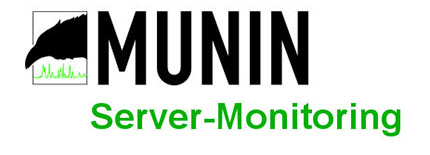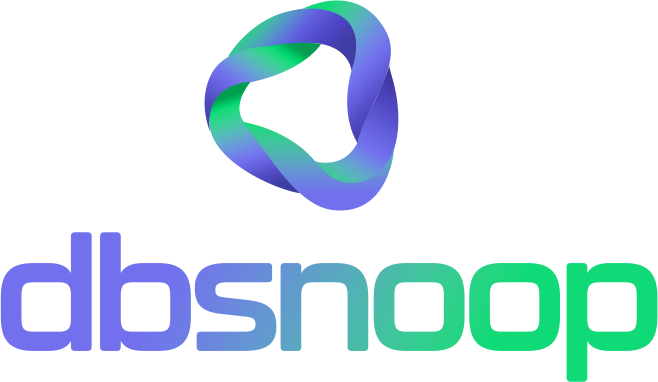
Munin is an open-source monitoring tool designed to monitor the health and performance of servers, networks, and IT infrastructure in general. It stands out for its simplicity and ability to generate detailed graphs from data collected from various systems, allowing IT administrators to visualize infrastructure performance and quickly and proactively identify issues. Munin uses a client-server architecture, making it a flexible and easy-to-configure tool, suitable for businesses of different sizes.
In this article, we will explore what Munin is, its main features, and how it can help monitor and optimize your IT infrastructure.
Main Features of Munin
- Client-Server Architecture: Munin uses a client-server architecture, where agents (clients) are installed on monitored servers and devices to collect performance metrics. The server centralizes this data and generates graphs that facilitate the visualization of the state of the infrastructure.
- Real-Time Data Collection: Munin collects performance metrics in real-time, generating graphs of metrics like CPU, memory usage, disk, and network traffic, allowing administrators to monitor and track the health of systems in real-time.
- Performance Visualization with Graphs: Munin is known for generating detailed and easy-to-read performance graphs. These graphs are stored in a web interface, allowing administrators and IT teams to access data to make informed decisions about the performance of the infrastructure.
- Network Monitoring: Besides monitoring servers, Munin supports network monitoring, providing important data on network traffic performance, latency, and other important factors for the performance of network infrastructure.
- Multi-Plugin Support: Munin comes with a wide variety of plugins that allow it to monitor various services and collect relevant performance metrics.
- Configurable Alerts: Munin allows the configuration of alerts that notify administrators of critical thresholds or identified anomalies. This allows for proactive response to possible problems.
- Ease of Installation and Configuration: Munin is known for its simplicity and ease of installation and configuration, making it an easy-to-use tool, even for less experienced administrators.
- Historical Monitoring: Munin stores historical data of performance metrics, helping administrators track long-term performance trends and make adjustments to improve infrastructure efficiency.
How Munin Works
Munin uses a client-server architecture, where clients are installed on the monitored servers or devices. These clients collect performance metrics, such as CPU, memory, network traffic, and disk usage, and send this information to the server. The server centralizes the data, processes the information, and generates detailed graphs that can be accessed through a web interface.
Each client node can be configured with various plugins, which are responsible for collecting specific performance metrics. For example, a plugin can monitor disk space usage, while another plugin can track network traffic.
The graphs generated by Munin show long-term trends, which help IT teams identify performance problems before they become critical.
Benefits of Using Munin
- Simple and Clear Visualization: Munin is excellent at generating clear and easy-to-interpret graphs, making it easier for IT teams to monitor server and network performance.
- Open Source and Free Solution: Munin is an open-source tool that is free to use. This makes it an excellent option for companies looking for an efficient monitoring solution but have limited budgets.
- Easy to Install and Use: With its client-server architecture, Munin is easy to install and configure, making it ideal for companies that don’t have advanced knowledge requirements.
- Centralized Monitoring: With a centralized server, Munin allows the consolidation of data and metrics from various servers and networks, providing IT teams with a complete view of the state of infrastructure.
- Plugin Extensibility: The large number of available plugins makes Munin a flexible and adaptable tool to the needs of any infrastructure.
- Historical Monitoring: The ability to store historical performance data helps administrators identify performance trends and possible areas for optimization.
- Scalability for Different Architectures: Munin is ideal for both small and large environments, being scalable to monitor large server and device infrastructures.
Why Munin is Ideal for Companies of All Sizes?
Munin is an ideal solution for companies looking for a simple, efficient, and economical monitoring solution. Its open-source nature, ease of configuration, and flexibility make it suitable for startups, SMEs, and large corporations.
- Startups & SMEs: For small companies that don’t have large monitoring budgets, Munin offers a free and easy-to-implement solution for monitoring servers and networks efficiently.
- Large Corporations: Large companies with significant infrastructure can use Munin to monitor servers and devices in a scalable way, guaranteeing advanced insights into the health of the infrastructure.
- Technology & Telecommunications Companies: Companies in the technology and telecommunications industries can use Munin to monitor network traffic, resource utilization, and overall system performance.
Comparison Between Munin and Other Tools
Munin stands out for its simplicity and its ability to generate detailed historical graphs. Here’s how it compares to other monitoring tools:
- Munin vs. Zabbix: Zabbix is a more advanced solution with a more comprehensive range of features. Zabbix excels at generating historical graphs and passive monitoring, making it an ideal choice for those who need something fast and easy to configure.
- Munin vs. Cacti: Cacti is known for its graphical visualizations, but Munin is simpler to configure and offers a client-server architecture that facilitates centralized monitoring of infrastructures.
- Munin vs. Prometheus: Prometheus is a more feature-rich monitoring solution and is better suited for modern distributed environments like cloud-native systems. On the other hand, Munin is better suited for traditional infrastructures with a focus on simplicity and ease of use.
Munin Pricing
Munin is an open-source tool and is completely free to download and use. Companies of all sizes can benefit from Munin without having to pay for additional licenses. Furthermore, the Munin community offers continuous support through forums and online documentation, which helps companies implement the tool efficiently.
Conclusion
Munin is an intuitive tool for monitoring networks and servers, known for generating detailed graphs that facilitate performance analysis over time. With its simple client-server architecture, it is ideal for companies needing an easy-to-implement and scalable solution to monitor their IT infrastructures.
However, dbsnOOp not only offers equally detailed graphs but also significantly enhances monitoring capabilities by incorporating artificial intelligence and predictive insights. This allows for the identification of trends before they become issues, something that Munin, in its standard form, does not cover. Additionally, dbsnOOp provides specialized database monitoring, detailing critical metrics that Munin overlooks, with a focus on performance improvement and operational efficiency.
In terms of precision and depth of information, dbsnOOp stands out, offering graphs as rich as Munin’s, with the added advantage of advanced features that help companies reduce MTTR, increase SLA, and ensure superior proactive monitoring. This makes dbsnOOp a more comprehensive and robust choice, especially for companies seeking to optimize their systems and IT infrastructure performance in a more sophisticated manner.
Give it a try for 14 days, no burocracy, no credit card
Learn more about Flightdeck!


